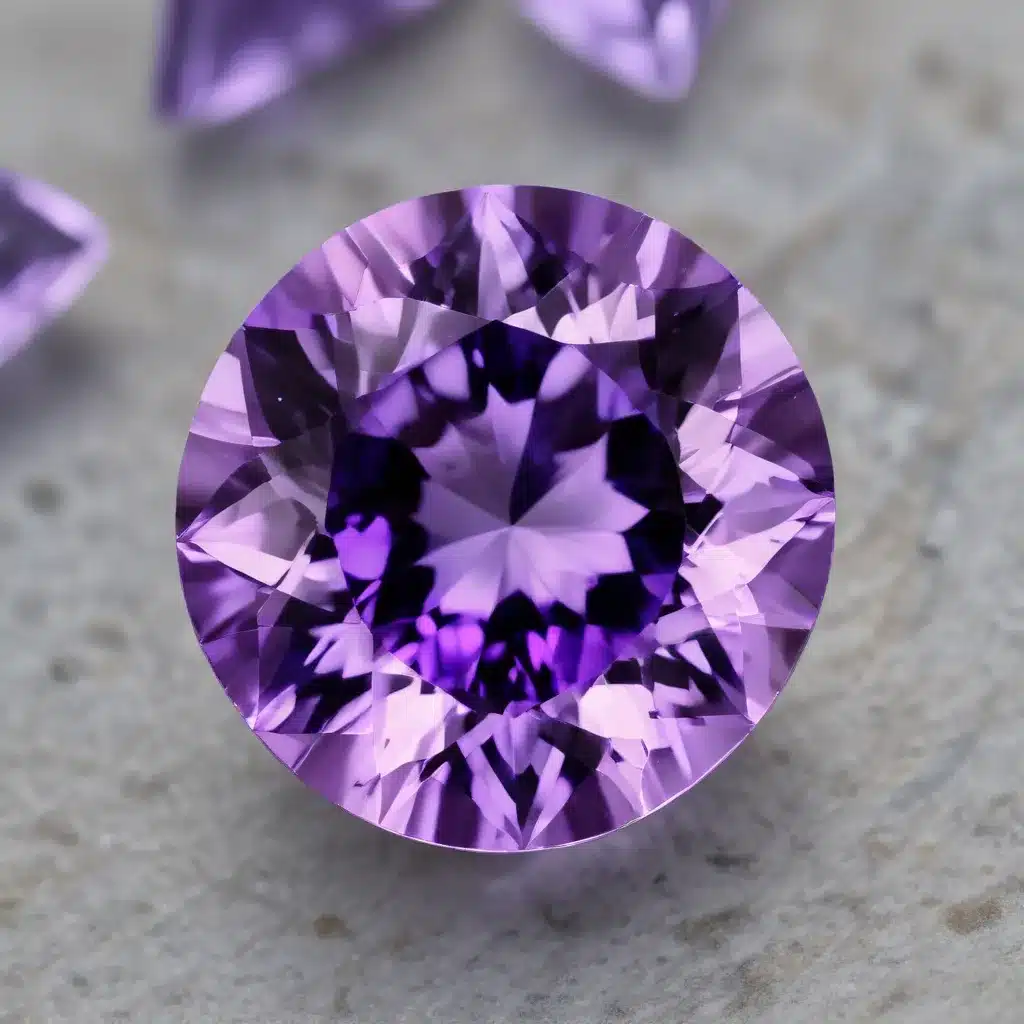
Amethyst, the stunning purple variety of quartz, has long been cherished for its timeless beauty and allure. While natural amethyst has dominated the gem and jewelry markets for centuries, the rise of synthetic amethyst has introduced an enticing alternative that offers numerous advantages. Crafted in state-of-the-art laboratories, synthetic amethyst has become a sought-after choice for jewelry makers, collectors, and anyone seeking the captivating charm of this enchanting gemstone.
Synthetic Amethyst Characteristics
Composition and Structure
Synthetic amethyst is chemically and structurally identical to its natural counterpart. Both are composed of crystalline silicon dioxide (SiO₂), with the purple hue of amethyst arising from the presence of iron impurities and the way they interact with the quartz crystal lattice. The meticulous manufacturing process of synthetic amethyst ensures that the final product matches the atomic-level structure of natural amethyst, making it virtually indistinguishable to the naked eye.
Physical Properties
Synthetic amethyst shares the same Mohs hardness (7) and specific gravity (2.65) as natural amethyst, ensuring that it possesses the same durability and resilience that make amethyst a popular choice for jewelry. The refractive index and dispersion values of synthetic amethyst are also comparable to the natural gemstone, enabling it to exhibit the same captivating optical properties that are so alluring.
Visual Appearance
The color and clarity of synthetic amethyst are meticulously controlled during the manufacturing process, allowing for the creation of stones that rival or even surpass the beauty of their natural counterparts. The rich, vibrant purple hues of synthetic amethyst can be precisely tailored, ensuring a consistent and uniform coloration throughout the gemstone. Additionally, synthetic amethyst is often free of the inclusions and imperfections that can be found in natural amethyst, resulting in a flawless, eye-clean appearance.
Natural Amethyst Comparison
Mineralogical Differences
While synthetic and natural amethyst share the same fundamental chemical composition and crystalline structure, there are subtle mineralogical differences that can be detected by trained gemologists. Natural amethyst may exhibit unique mineral inclusions, growth patterns, and color zoning that are not present in the lab-grown variety. These distinctions can provide valuable insights into the geological formation and origin of the gemstone.
Visual Distinctions
One of the primary differences between natural and synthetic amethyst is the presence of natural imperfections and inclusions in the former. Natural amethyst often displays unique patterns, varying shades of purple, and the occasional mineral inclusion or flaw, which can contribute to its distinctive character and appeal. Synthetic amethyst, on the other hand, is typically free of such irregularities, maintaining a consistent and flawless appearance.
Geological Formation
Natural amethyst is formed deep within the Earth’s crust, where quartz crystals grow slowly over thousands of years, trapping iron and other impurities that give the gemstone its characteristic purple hue. This geological process is intricate and unpredictable, resulting in the natural variations and unique qualities that make each natural amethyst specimen one-of-a-kind. In contrast, synthetic amethyst is created in a controlled laboratory environment, where the growth conditions can be precisely regulated to produce a more uniform and predictable final product.
Synthetic Amethyst Production
Crystal Growth Techniques
The production of synthetic amethyst relies on advanced crystal growth techniques, such as the hydrothermal method and the flux method. In the hydrothermal method, amethyst crystals are grown in pressurized, heated vessels containing a nutrient-rich solution, mimicking the natural conditions found deep underground. The flux method, on the other hand, utilizes a molten flux, or solvent, to facilitate the growth of amethyst crystals at lower temperatures and pressures.
Manufacturing Process
The manufacturing process of synthetic amethyst involves careful control and monitoring of various parameters, including temperature, pressure, and the composition of the growth medium. This meticulous approach ensures the consistent quality and reproducibility of the final product, allowing for the creation of synthetic amethyst that closely matches the appearance and properties of natural amethyst.
Quality Control Measures
Synthetic amethyst production facilities employ rigorous quality control measures to ensure the high standards and consistency of their products. This includes regular inspections, testing, and grading of the gemstones to verify their physical properties, color, and clarity. Advanced analytical techniques, such as spectroscopy and X-ray diffraction, are often used to confirm the identity and authenticity of synthetic amethyst.
Applications and Uses
Jewelry and Gemstone
The beauty and durability of synthetic amethyst make it a popular choice for use in a wide range of jewelry and gemstone applications. From engagement rings and necklaces to earrings and pendants, synthetic amethyst offers a cost-effective and readily available alternative to natural amethyst, without compromising on its stunning visual appeal. The consistent quality and availability of synthetic amethyst also make it an attractive option for custom jewelry designs and commercial production.
Decorative Purposes
Beyond its use in jewelry, synthetic amethyst has found a variety of decorative applications, such as in vases, figurines, and other ornamental objects. The rich, vibrant purple hue of synthetic amethyst complements a wide range of home decor styles, from classic to contemporary, making it a versatile choice for adding a touch of elegance and sophistication to any living space.
Industrial Applications
In addition to its aesthetic applications, synthetic amethyst has also found use in various industrial and technological applications. Its hardness, thermal conductivity, and piezoelectric properties make it suitable for use in specialized electronics, optics, and precision instruments. The consistent quality and availability of synthetic amethyst ensure a reliable supply for these industrial applications.
As the demand for gemstones continues to grow, the availability and advantages of synthetic amethyst make it an increasingly attractive alternative to its natural counterpart. With its captivating beauty, durability, and versatility, synthetic amethyst has firmly established itself as a vibrant and valuable addition to the world of gems and jewelry. The team at Shelby Gem Factory is proud to offer a wide selection of high-quality synthetic amethyst, catering to the diverse needs and preferences of our customers.

